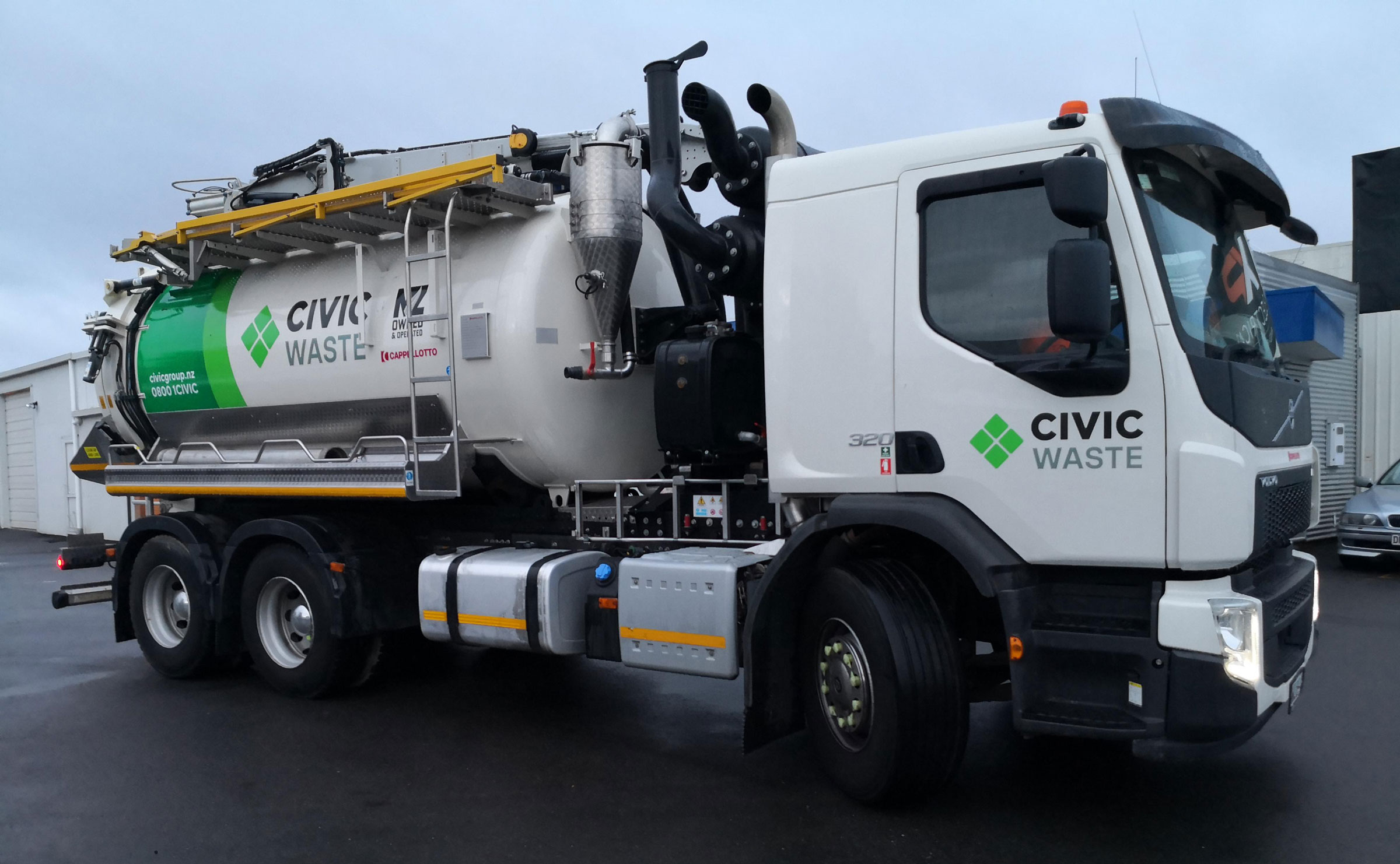Vacuum and Hydro-Excavation

Civic Waste Vacuum and Hydro-Excavation Services
Clearing and cleaning drains, sumps and cesspits requires specialised knowledge and equipment – and we have more than 20 years’ experience in these services.
At Civic, we offer technically advanced, self-contained vacuum loading equipment for the efficient and safe removal of dusts, solids and liquids from confined spaces and pits.
We currently perform scheduled drain, sump and cesspit clearing for local councils around New Zealand. On an ad-hoc basis we also perform hydro-excavation services.
What Vacuum and Hydro-Excavation Services Does Civic Waste Offer?
We offer a variety of specialist services including:
- Drain, sump and cesspit clearing
- Drain unblocking and cleaning
- Hydro-excavation
- Liquid and solid waste removal
- Portaloo servicing and cleaning
- Grease trap cleaning
All mobile vacuum-loading units are equipped with emergency spill kits and our operators have extensive in-house training on procedures, checks and managing our environmental responsibility.
When it comes to Cleaning and Clearing Drains, Vacuum Excavation and Hydro-Excavation, Liquid and Solid Waste Disposal, and Grease or Sewer Waste Receptacle Servicing it is always best to leave it to the experts because specialist equipment must be used during these complex processes.
Vacuum excavation requires a great deal of skill and can be a very challenging project to undertake. Not only does operating the equipment take a lot of concentration, but the entire vacuum and hydro-excavation process requires a high level of expertise.
What is Vacuum Excavation for?
Vacuum Excavation is the best way to ensure underground cables and utilities are not damaged during underground material removal in build-up areas.
Both hydro and air vacuum excavation provide an alternative to manual hand digging. Vacuum excavation also removes the need to use heavy machinery or equipment to dig and then remove the debris. This reduces the health and safety risk to on-site workers. When vacuum excavation is used, it removes unwanted and clogging material from an area effectively and quickly.
Excavation using this method combines a vacuum suction with either high-pressure water or air. It is applied to any area requiring dirt, slurry, or mud material removal. It is the superior way of removing blockages and material build-up when there are pipes, power lines, or underground cables.
Why is vacuum excavation superior to other debris and material removal methods?
Advantages of using vacuum excavation compared to other digging methods
- Highly precise and localised
- Very advanced digging and material removal technique
- Safe, with minimal worker exposure to detritus
- A faster, more controlled process.
When time is a factor, which it usually is when dealing with high-traffic areas, using vacuum excavation equipment over any other method means the quick and efficient material removal.
Vacuum excavation in New Zealand is environmentally friendly in many ways
- Does not require the pre- or post-application of harsh chemicals
- Lower noise pollution
- Material is removed and disposed of in a responsible manner
- Minimal disruption
What is the difference between hydro and air excavations?
There are two kinds of vacuum excavation techniques, and we can help you decide which one you need as both methods are used in different areas.
Hydro-vacuum excavation
A clearing and cleaning technique that combines high-pressure water with a vacuum. This is used whenever underground utilities, or any other confined underground space, needs solid or liquid waste removal without damage to surrounding areas.
High-pressure water is more efficient than air-pressure, and so is able to penetrate thick layers of solid or liquid waste matter. Hydro-excavation is considered to be a more aggressive type of vacuum excavation because it is quicker. The only drawback to using high-pressure water to excavate is the removed material cannot be reused – for example, to refill the hole.
Hydro-vacuum uses water to reduce soil or any other material density. After the water has loosened the material, it is easy to vacuum out.
Air vacuum excavation
Excavation using an air vacuum utilises compressed air to loosen soil or other materials. Once loosened, the material is vacuumed into a tank. The air vacuum process is most typically used when there are underground utility cables or other water-sensitive equipment around, because the surroundings remain dry.
The excavated material also stays dry and loose inside the tank, which means it can be dumped back into place afterwards to refill the excavated holes.
At Civic Waste, we offer high-tech hydro-vacuum and air vacuum services to suit the needs of both private and municipal clients.
If you need a sump or cesspit drained and the contents disposed of in a timely and responsible manner, please contact us today.
